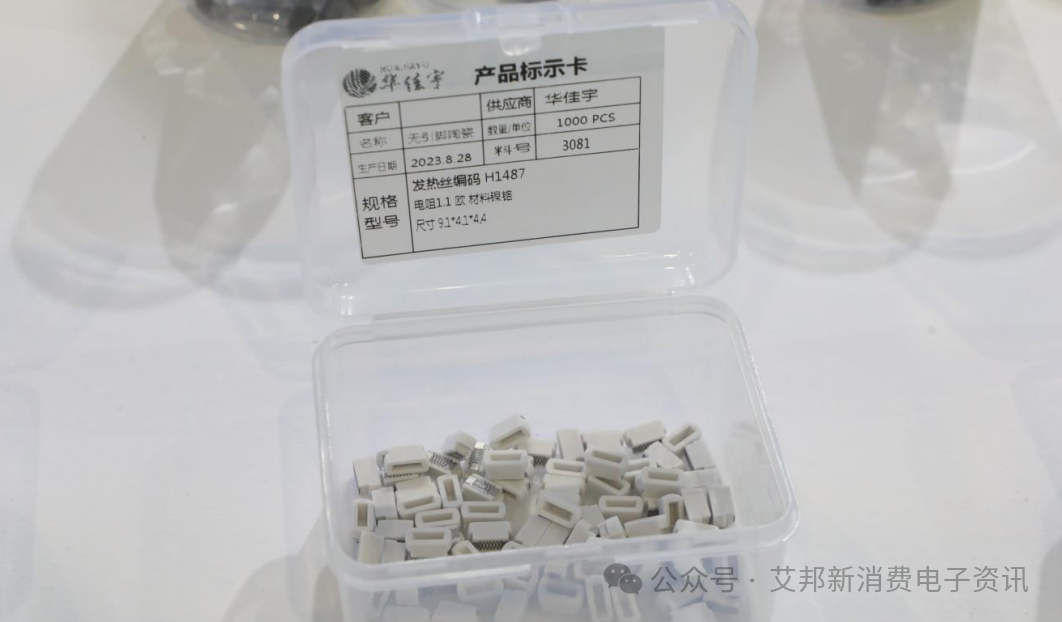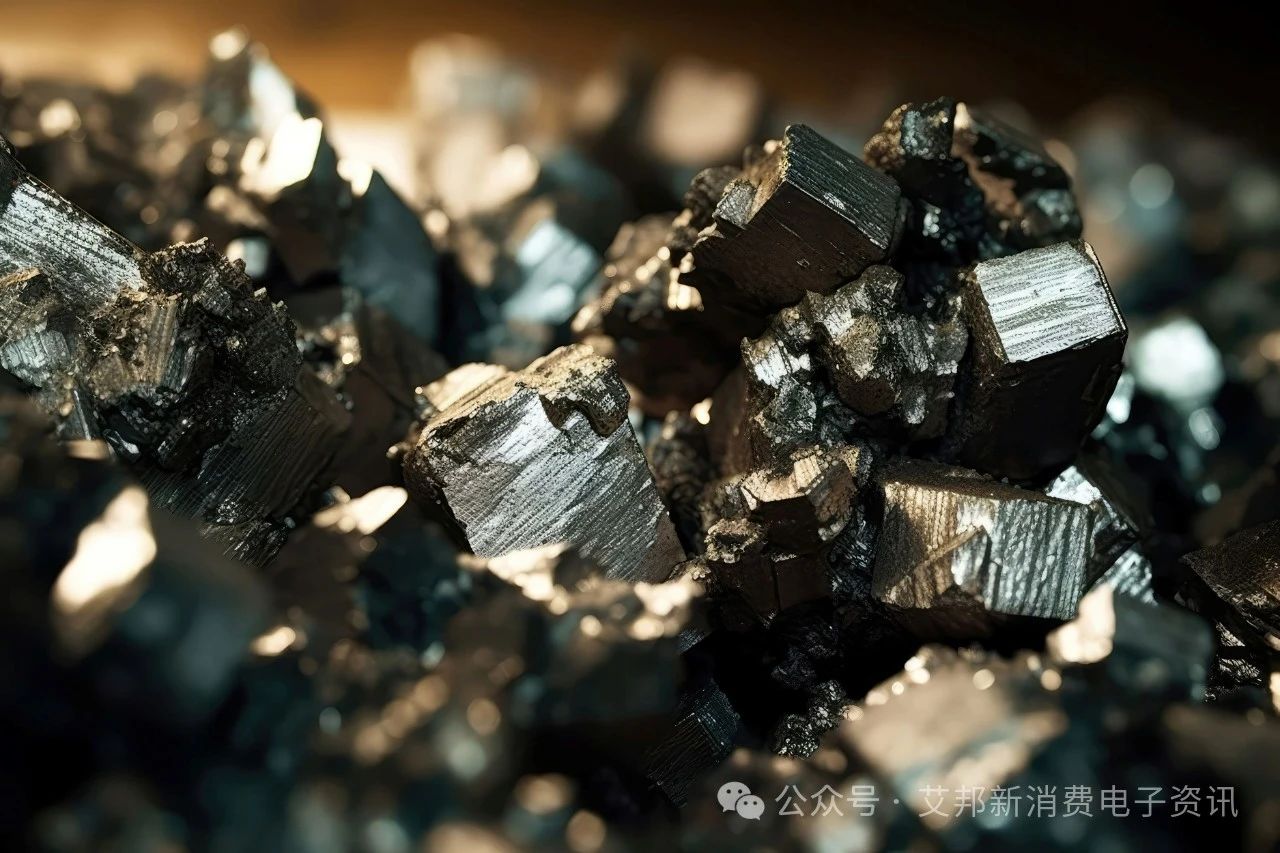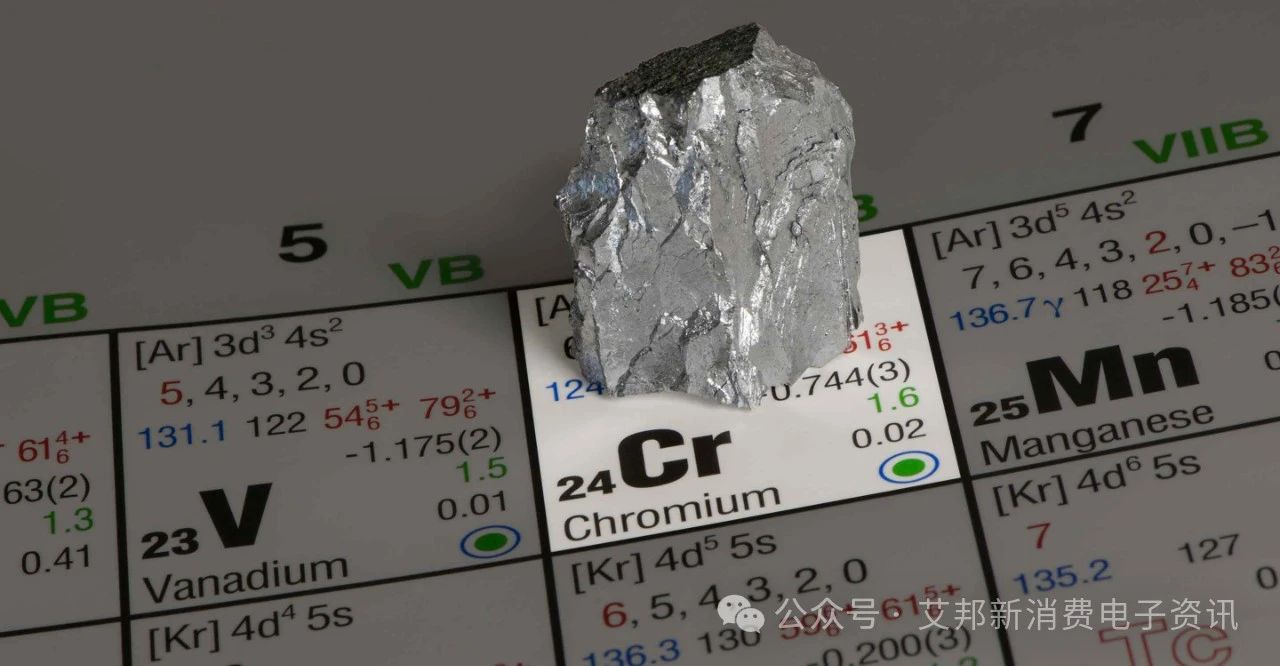Nickel-chromium heating wire, as its name suggests, is a high-temperature electric heating alloy material made by smelting nickel, chromium and other elements in a certain proportion. It is also one of the common alloy materials for electronic cigarette heating wires.

Generally, the chromium (Cr) content ranges from 15% to 30%, and the nickel (Ni) content ranges from 29% to 80%. These alloys exhibit an austenitic microstructure. Based on their composition, they are mainly categorized into types such as Cr20Ni80, Cr30Ni70, Cr15Ni60, Cr20Ni35, and Cr20Ni30.
From the above, it can be seen that the main elemental components of nichrome heating wire are nickel and chromium. The following will introduce the roles played by the nickel (Ni) and chromium (Cr) elements in nichrome heating wire.
I. The Role of Nickel (Ni) in Alloys
Nickel strengthens ferrite and refines pearlite in alloys. The overall effect is an increase in strength, with no significant impact on plasticity.
Generally speaking, for low-carbon steels that do not require quenching and tempering processes and are used in the rolled, normalized, or annealed state, a certain amount of nickel can enhance the alloy's strength without significantly reducing its toughness. According to statistics, an increase of 1% in nickel content can raise the strength by approximately 29.41 Pa.
As the nickel content increases, the yield strength of the alloy improves more rapidly than its tensile strength. Therefore, the yield ratio of nickel-containing steels can be higher than that of ordinary carbon steels. While nickel enhances the strength of the alloy, it has less adverse effect on toughness, plasticity, and other processing properties compared to other alloying elements.
 镍矿石
镍矿石
For medium-carbon steels, nickel lowers the pearlite transformation temperature, resulting in finer pearlite. Additionally, because nickel reduces the carbon content at the eutectoid point, compared to carbon steels with the same carbon content, nickel-containing steels have a higher volume fraction of pearlite. This leads to greater strength in pearlite-ferrite steels that contain nickel, compared to carbon steels with the same carbon content.
Conversely, if the same strength level is required, the carbon content in nickel-containing steels can be appropriately reduced. This reduction in carbon content helps to improve the steel’s toughness and plasticity. Nickel also enhances the steel’s resistance to fatigue and reduces its sensitivity to notches. Moreover, nickel lowers the ductile-to-brittle transition temperature of steel, which is of great significance for steels used in low-temperature environments.
Steels containing 3.5% nickel can be used at temperatures as low as –100 °C, while those with 9% nickel can operate at –196 °C. However, nickel does not improve the steel’s resistance to creep, and therefore it is generally not used as a strengthening element in heat-resistant steels.
In iron-nickel alloys with high nickel content, the coefficient of linear expansion changes significantly with variations in nickel content. This characteristic can be utilized to design and produce precision alloys and bimetallic materials with either extremely low or specific coefficients of thermal expansion.
In addition, the addition of nickel to steel not only improves its resistance to acids but also enhances its resistance to alkalis, as well as to atmospheric corrosion and salt. Nickel is one of the important elements in stainless acid-resistant steels.
(1) Effects on the Microstructure and Heat Treatment of Steel
A. Nickel and iron form unlimited solid solutions. Nickel expands the austenite phase field of iron — it raises the A₄ point (the temperature at which austenite begins to form on cooling) and lowers the A₃ point (the temperature at which austenite begins to transform to ferrite on cooling). As a result, nickel is a major alloying element for forming and stabilizing austenite.
B. Nickel does not form carbides with carbon.
C. Nickel reduces the carbon content of eutectoid (pearlitic) structures. Its effect in this regard is second only to nitrogen and stronger than that of manganese.
(2) Effects on the Mechanical Properties of Steel
A. Nickel strengthens ferrite and refines and increases the amount of pearlite, thereby improving the strength of steel without significantly affecting its plasticity.
B. The carbon content in nickel-containing steel can be appropriately reduced, which helps to improve the steel’s toughness and plasticity.
C. Nickel enhances the steel’s resistance to fatigue and reduces its sensitivity to notches (i.e., stress concentrations).
D. Because nickel does not significantly improve the hardenability or tempering stability of steel, its role in quenched and tempered (调质) steels is relatively limited.
E. Nickel lowers the ductile-to-brittle transition temperature of steel. For example, steel containing 3.5% nickel can be used at –100 °C, and steel with 9% nickel can operate at –196 °C.
(3) Effects on the Physical, Chemical, and Processing Properties of Steel
A. Nickel significantly reduces the thermal conductivity and electrical conductivity of steel.
B. Austenitic steels with less than 30% nickel exhibit paramagnetism (i.e., they are non-magnetic or "non-magnetic steels"). In contrast, Fe-Ni alloys with more than 30% nickel are important precision soft magnetic materials.
C. Steels with more than 15–20% nickel exhibit high resistance to corrosion by sulfuric acid and hydrochloric acid, but they are not resistant to nitric acid. Overall, nickel-containing steels possess a certain degree of resistance to acids, alkalis, salts, and atmospheric corrosion. Low-alloy nickel steels also offer good resistance to corrosion fatigue. However, nickel-containing steels are prone to heat brittleness and erosive porosity when heated in atmospheres containing sulfur or carbon monoxide.
D. High-nickel steels should be welded using austenitic welding electrodes to prevent cracking.
E. Nickel-containing steels are prone to defects such as banding and flakes , which should be prevented through proper process control during production.
(4) Applications of Nickel in Steel
A. Pure nickel steels (steels with nickel as the primary alloying element) are used only in cases where exceptionally high impact toughness or operation at very low temperatures is required.
B. In mechanical manufacturing, nickel-chromium or nickel-chromium-molybdenum steels — after proper heat treatment — achieve a favorable balance of strength and toughness. Nickel-containing steels are especially suitable for parts that require surface carburizing.
C. In high-alloy austenitic stainless and heat-resistant steels, nickel acts as an austenitizing element, contributing to excellent overall performance. These include mainly Ni-Cr series steels, as well as Cr-Mn-N, Cr-Al-Si, and Fe-Al-Mn steels. In some applications, these can replace Cr-Ni series steels.
D. Due to the scarcity of nickel and its status as an important strategic material, its use as an alloying element in steel should be minimized or avoided whenever possible — unless the desired performance characteristics cannot be achieved using other alloying elements.
II. The Role of Chromium (Cr) in Alloys
Chromium enhances the hardenability of alloys and contributes to secondary hardening. It increases the hardness and wear resistance of high-carbon steels without making the steel brittle. When the chromium content exceeds 12%, the steel acquires good high-temperature oxidation resistance and resistance to corrosion by oxidizing media. Chromium also improves the thermal strength of steel, making it one of the primary alloying elements in stainless acid-resistant steels and heat-resistant steels.
In carbon steels, chromium increases the strength and hardness in the as-rolled condition, but it reduces elongation and reduction of area (i.e., it reduces ductility and plasticity). However, when the chromium content exceeds 15%, the strength and hardness tend to decrease, while the elongation and reduction of area improve accordingly. Parts made of chromium-containing steel can achieve higher surface finish quality during grinding.
In quenched and tempered structural steels, the primary role of chromium is to enhance hardenability, enabling the steel to achieve better comprehensive mechanical properties after the quenching and tempering process. In carburizing steels, chromium can form chromium-containing carbides, which improve the wear resistance of the material’s surface. Additionally, chromium-containing spring steels are less prone to decarburization during heat treatment.
Chromium improves the wear resistance, hardness, and red hardness (hot hardness) of tool steels, and it provides good tempering stability. In electric heating alloys, chromium enhances the alloy’s oxidation resistance, electrical resistivity, and strength.

(1) Effects on the Microstructure and Heat Treatment of Steel
A. Chromium forms a continuous solid solution with iron and narrows the austenite phase region. It forms various carbides with carbon, exhibiting a higher affinity for carbon than iron and manganese, but lower than tungsten and molybdenum. Chromium and iron can also form the intermetallic compound σ-phase (FeCr).
B. Chromium reduces the carbon concentration in pearlite and the maximum solubility of carbon in austenite.
C. Chromium slows down the decomposition of austenite and significantly improves the hardenability of steel. However, it also increases the tendency toward temper brittleness.
(2) Effects on the Mechanical Properties of Steel
A. Chromium increases the strength and hardness of steel, and this effect becomes more pronounced when combined with other alloying elements.
B. Chromium significantly raises the ductile-to-brittle transition temperature of steel.
C. In high-chromium Fe-Cr alloys, if the σ-phase precipitates, the impact toughness drops sharply.
(3) Effects on the Physical, Chemical, and Processing Properties of Steel
A. Chromium enhances the wear resistance of steel, and parts made from chromium steel can achieve a high surface finish after grinding.
B. Chromium lowers the electrical conductivity of steel and reduces the temperature coefficient of electrical resistance.
C. Chromium increases the coercivity and residual magnetism of steel, making it widely used in the production of permanent magnet steels.
D. Chromium promotes the formation of a passivation film on the steel surface. When present in sufficient amounts, it significantly improves the corrosion resistance of steel, especially against nitric acid. However, if chromium carbides precipitate, the corrosion resistance of the steel may decrease.
E. Chromium enhances the oxidation resistance of steel.
F. In chromium steels, dendritic segregation is more likely to occur, which can reduce plasticity.
G. Since chromium reduces the thermal conductivity of steel, heating during hot working should be done slowly, and forgings or rolled products should be cooled gradually after processing.
(4) Applications of Chromium in Steel
A. In alloy structural steels, chromium is primarily used to improve hardenability, and it also helps form chromium-containing carbides on carburized surfaces to enhance wear resistance.
B. In spring steels, chromium contributes to the overall performance when combined with other alloying elements.
C. In bearing steels, chromium is mainly valued for the wear resistance provided by its special carbides, as well as the high surface finish achievable after grinding.
D. In tool steels and high-speed steels, chromium is primarily used to enhance wear resistance, and it also provides certain tempering stability and toughness.
E. In stainless steels and heat-resistant steels, chromium is often used in combination with manganese, nitrogen, nickel, etc. When forming austenitic steels, there must be a proper ratio between chromium (which stabilizes ferrite) and manganese/nickel (which stabilize austenite) — for example, in Cr18Ni9 stainless steel.
来源:松泰电工
电子雾化与HNB产品都是新型电子产品,结构虽小,却融合应用多种材料、表面处理、芯片电子等技术工艺,而且雾化技术一直在不断更迭,供应链在逐步完善,为了促进供应链企业间有一个良好的对接交流,艾邦搭建产业微信群交流平台,欢迎加入;Vape e-cigarettes (VAPE) and Heat-Not-Burn e-cigarettes (HNB) are both emerging electronic products. Despite their compact size, they integrate various materials, surface treatment technologies, chip electronics, and other advanced technical processes. Moreover, atomization technology is constantly evolving and the supply chain is being progressively perfected. To facilitate good communication and networking among supply chain enterprises, Aibang has established an industry WeChat group communication platform and warmly welcomes interested enterprises to join.

